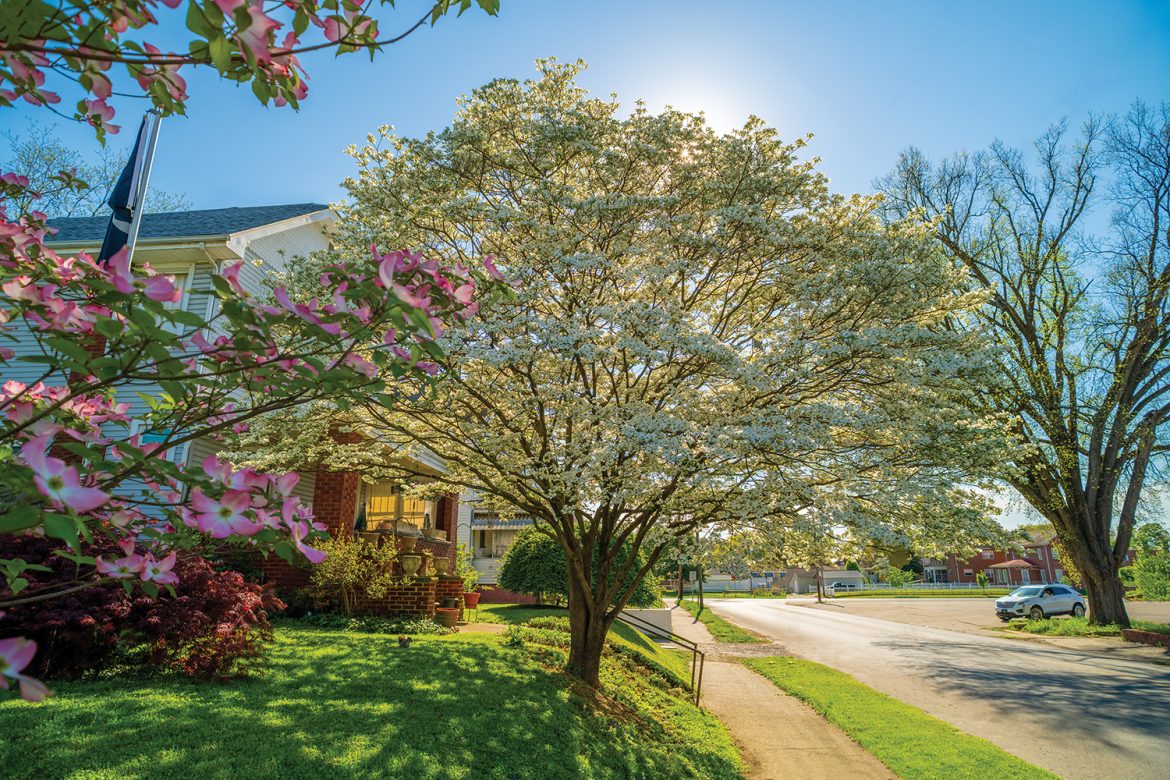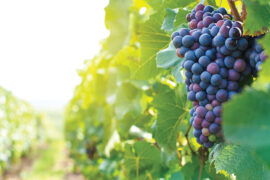A Photo Essay by Charles Bowen & Rick Lee
HQ 105 | SPRING 2019
Spring has a definite color in Huntington. Wave upon wave of white and pink dogwoods burst into bloom throughout town. Simple, elegant blossoms of this fragile tree seem to glow with their own energy, whether caught shimmering in the morning sun or seen in the warm light of streetlamps after dark.
Are dogwoods — a springtime fixture for as long as most of us can remember — just naturally so prevalent in Huntington, or did specific people play a part in this local success story?
An earlier beautification project began in the early 1930s, when the Huntington Garden Club planted large dogwoods along Four Pole Creek in Ritter Park and then sold carloads of small dogwoods to local citizens at cost.
A dogwood on every lawn was the goal of the Huntington Council of Garden Clubs in 1949. Drive around the city in the spring and you’ll see the results of the group’s five-year plan to turn Huntington into “The Dogwood City.” Dogwoods can be found on every block, if not in every yard. They’re stunning in all seasons, with dense green foliage in summer, red berries and scarlet leaves in fall, delicate bare branches in winter and, of course, a spectacular bounty of blooms in spring.
At that time, the West Virginia Garden Club was urging clubs throughout the state to encourage the planting of the native dogwood. Within five years, all the local garden clubs had planted more than 6,000 dogwoods in parks and cemeteries, in other public areas and along U.S. 60 in Westmoreland, and encouraged many homeowners to plant dogwoods in their own yards.
A number of individuals have also provided trees to the park system over the years. About 10% of the trees in Ritter Park are dogwoods.
Many Christians consider the dogwood as a visual reminder of their faith. According to legend, the dogwood was as large and strong as an oak 2,000 years ago, and its hard wood was used for Jesus’ cross. The dogwood was distressed at being put to this cruel use, so Jesus took pity and deemed that forever after, the tree would be too small and twisted to be used that way. That’s why the dogwood’s blossoms are in the form of a cross, with nail prints stained with rust at the end of the bracts and a crown of thorns at the center of each bloom.

238 12th Ave Huntington, WV

439 12th Ave Huntington, WV

Ritter Park

139 11th Ave Huntington, WV

Spring Hill Cemetery Huntington, WV

225 10th Ave Huntington, WV

501 Norway Ave Huntington, WV

3759 3rd Ave Huntington, WV

401 10th Ave Huntington, WV

421 W 7th Ave Huntington, WV





